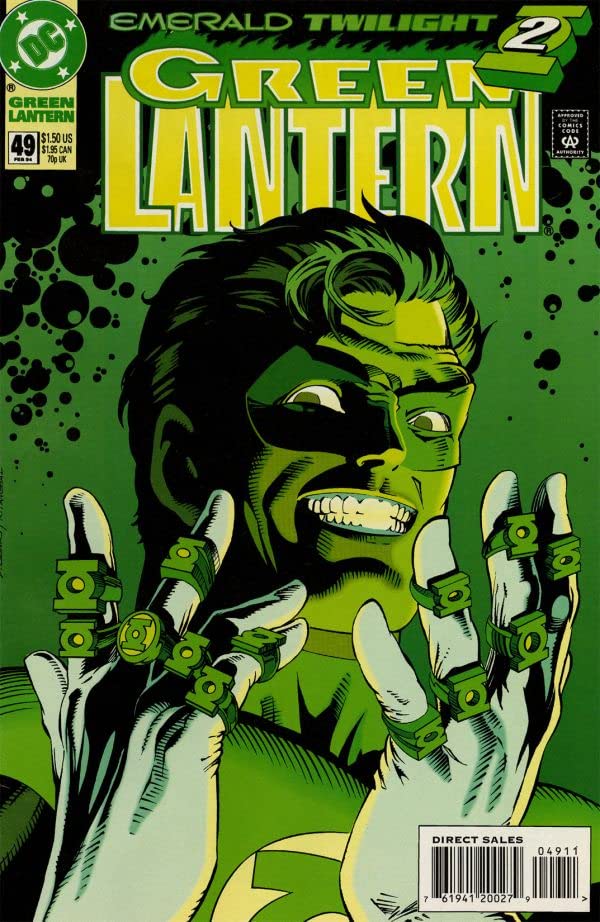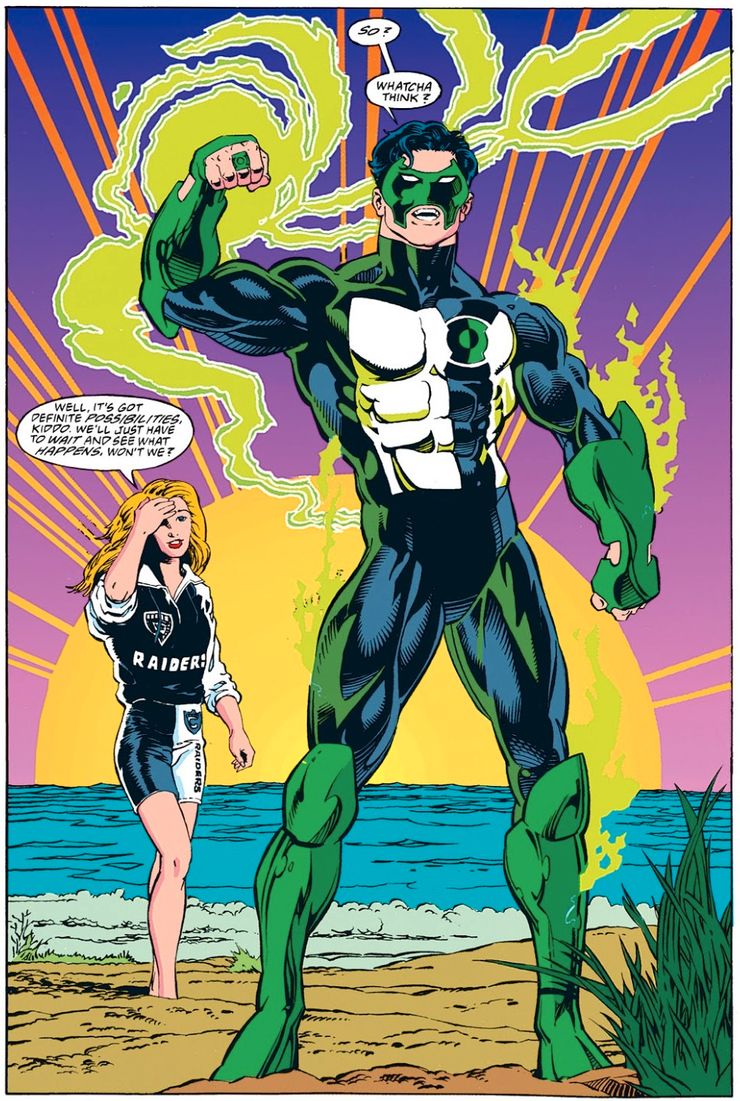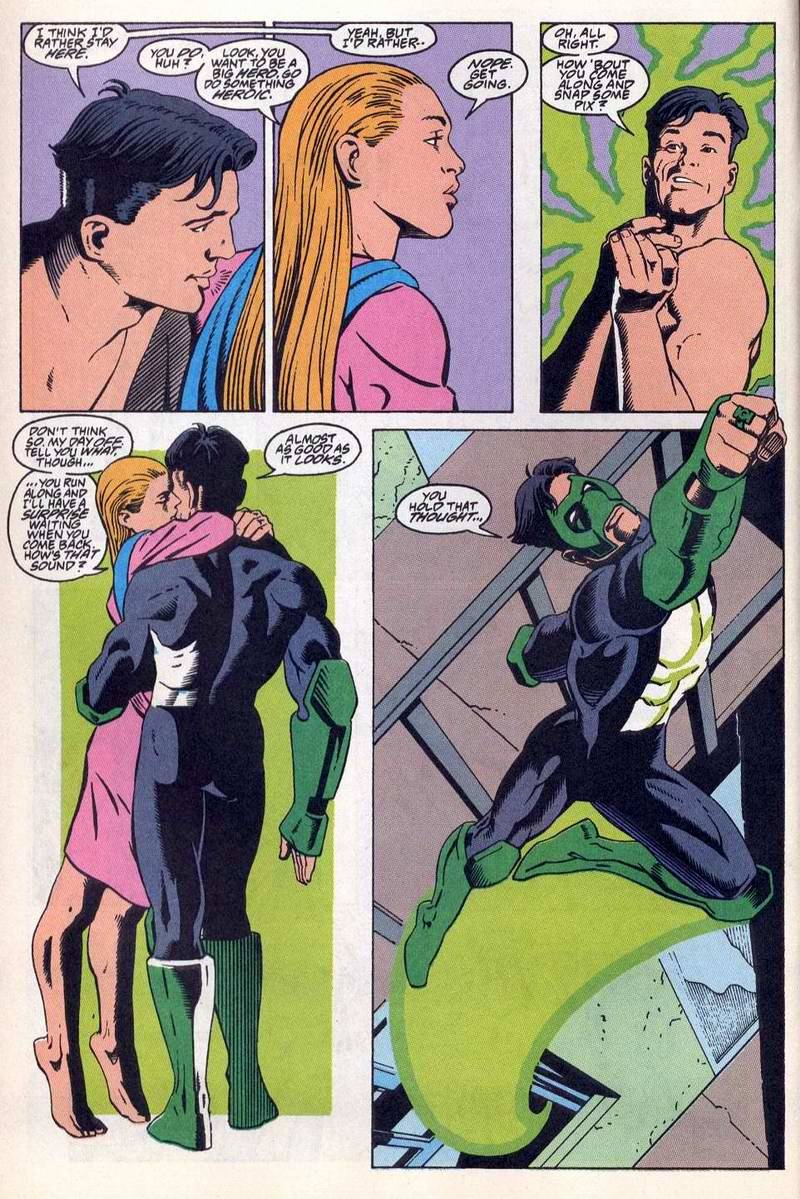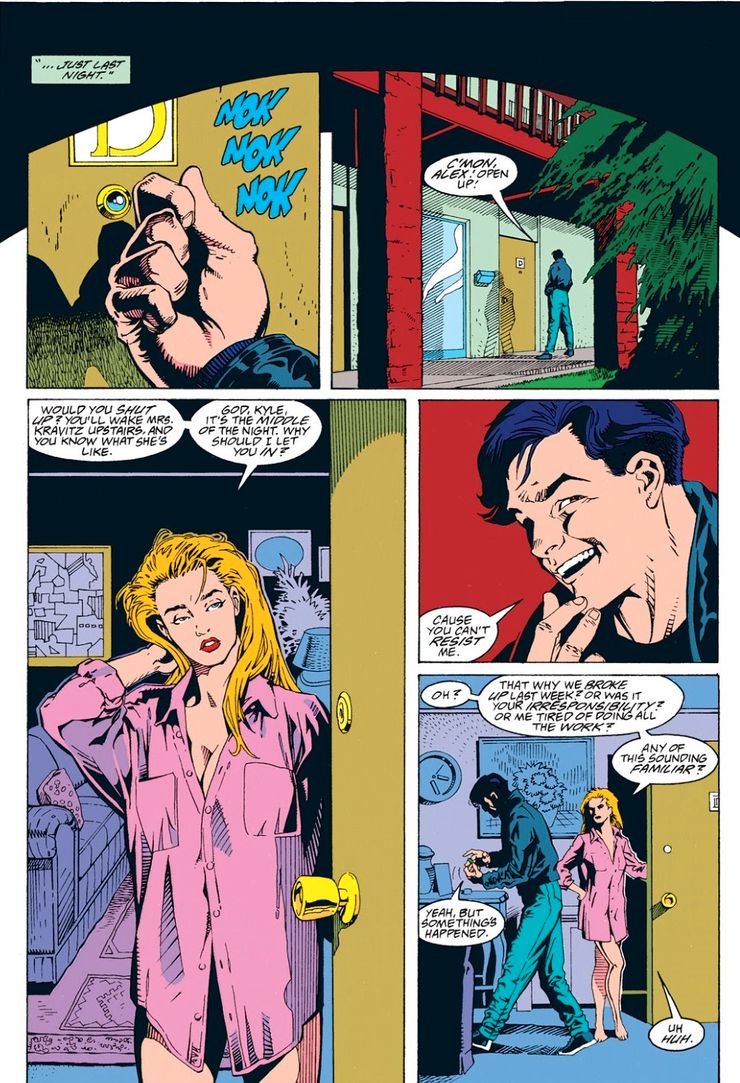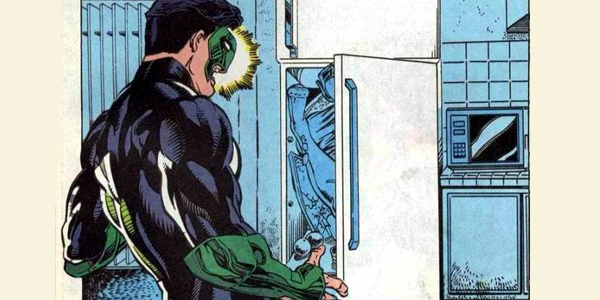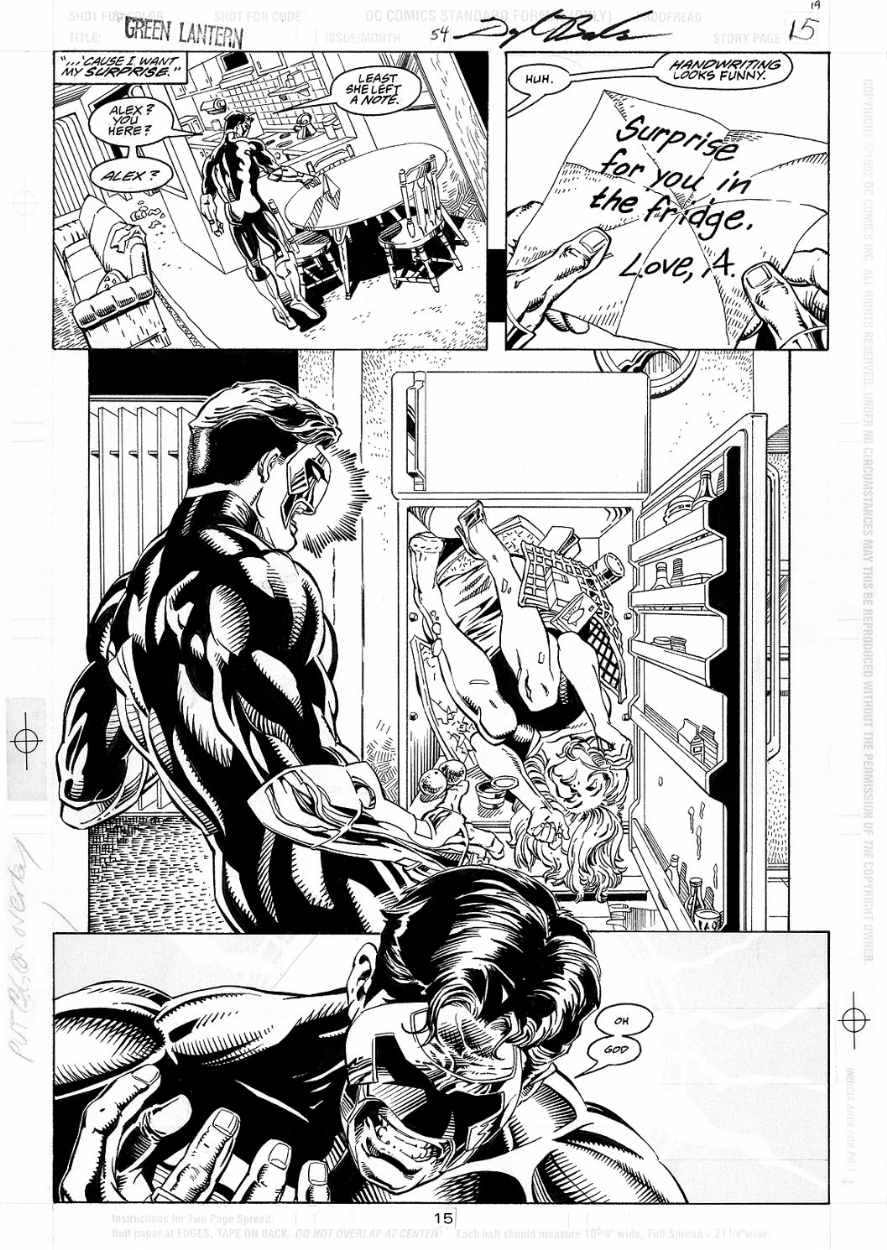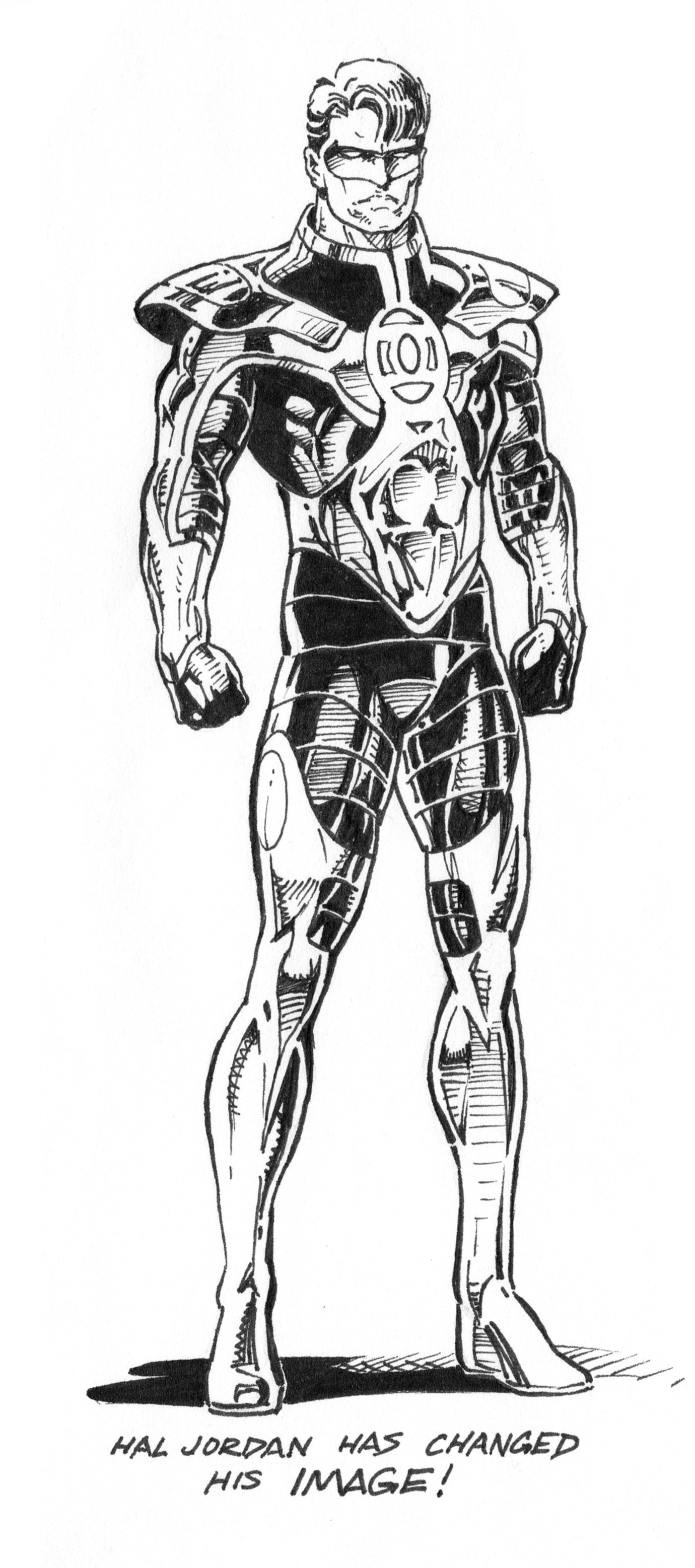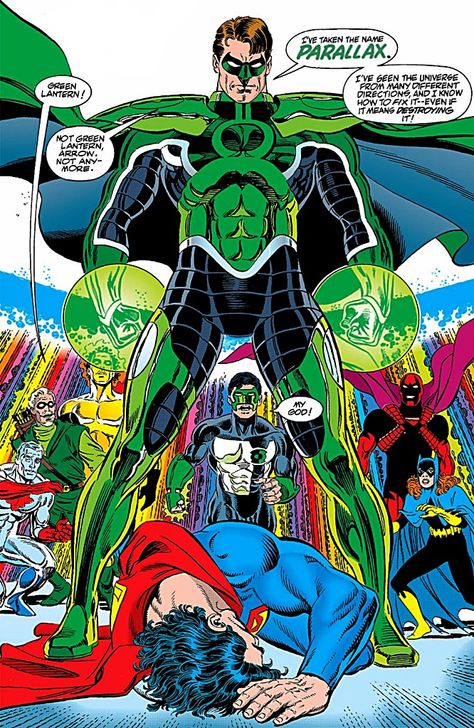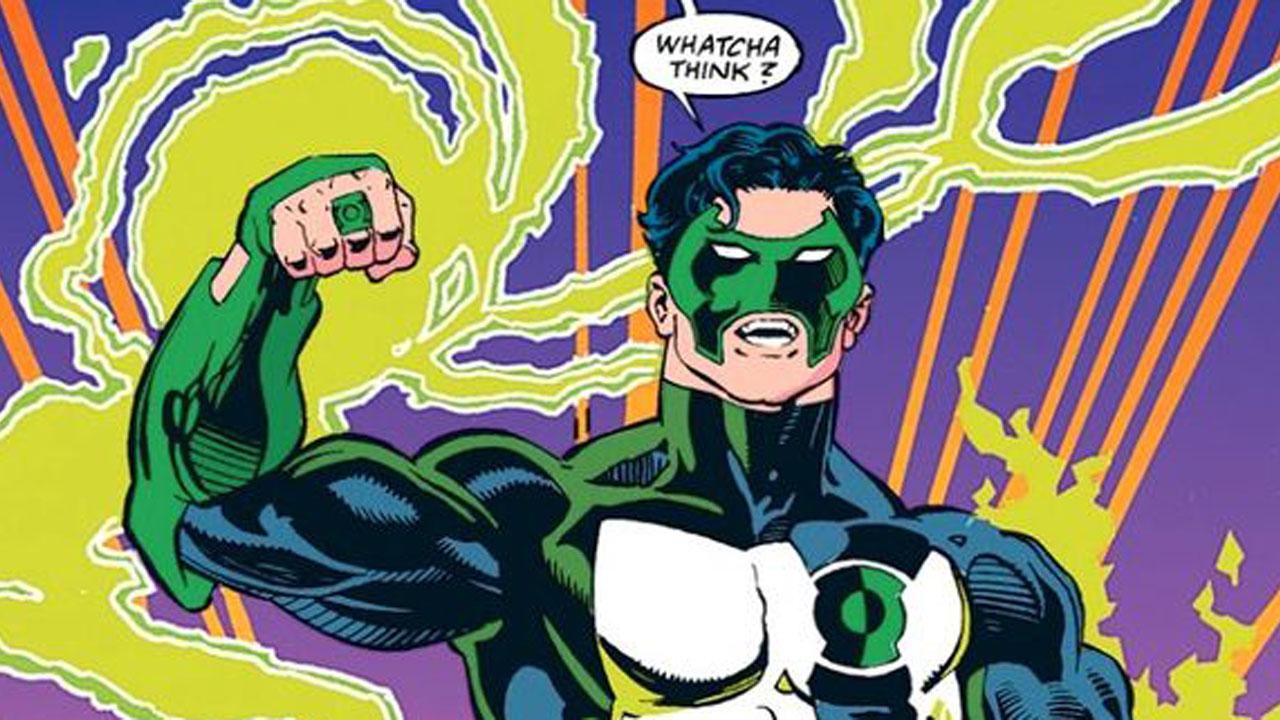
It's been 26 years since Kyle Rayner donned the Green Lantern mantle for the first time, and for thousands of fans, he remains their Green Lantern.
Kyle's rookie year as DC's emerald guardian was helmed by writer Ron Marz, then a new face at DC, and artists such as Darryl Banks, Derec Donovan nee Aucoin, Jamal Igle, and legendary inker Romeo Tanghal. For the first 12 issues of Kyle stepping into Hal Jordan's boots, he went through an incredible trial by fire with the infamous murder of his girlfriend Alex DeWitt, almost being killed himself by Mongul, as well as taking on his power-obsessed predecessor.
With the memories of that rookie year surviving and thriving even unto today, Newsarama reached out to Marz and Banks to get the full story about how they were paired together, how they took to Green Lantern, the birth of Kyle Rayner, his relationship with Alex, the rise of Parallax, and of course the antics of H.E.A.T. - a group of fans who actively petitioned against Hal Jordan's replacement as DC's Green Lantern.
Newsarama: Ron, Darryl, before we get into your work on Green Lantern, let's talk about what led up to do it.
Ron, you had been at Marvel on Thor, Silver Surfer, and What If...? Darryl, you had been more on the independent scene with Innovation Comics but eventually landed at DC with Legion of Super-Heroes. When did you come together for the first time to talk about Green Lantern and 'Emerald Twilight'?
Ron Marz: You know, I honestly don't remember the first time we talked. I do know we had to hit the ground running.
Darryl was already slated to take over the art duties on Green Lantern, even before I was offered the book.
Get the best comic news, insights, opinions, analysis and more!
Darryl Banks: I was already on the project with another writer then the editors decided to go in a different direction.
Marz: The previous writer had a different storyline in mind for issues #48 through #50, and Darryl actually drew some pages from that issue script.
Banks: I had drawn about five pages or so of the initial project when the changes began.
Marz: I think I have copies of them somewhere.
But ultimately DC editorial decided that story was not what they wanted, and offered me the title.
I assume Darryl and I started talking when he started drawing issue #50. Switching storylines meant that the schedule was behind enough that other artists had to be brought in to draw #48 and #49. That's why each issue of 'Emerald Twilight' has a different artist.
Nrama: But the story you ended up telling was the story of this fallen hero. Coast City is destroyed, and that sort of broke Hal Jordan as we see in #50 when the Guardians finally confront him about his crimes.
You're taking over the story from the previous writer, and coming onto a new book and you know that Hal is about to take the ultimate heel turn, he even kills Kilowog. Do you remember any editorial notes or did you just let loose and see what you could get away with?
Marz: DC faxed me about a page-and-a-half of notes, just a broad outline of what the three issues were supposed to be. All the details were left to me to fill in.
Killing Kilowog was all me.
I felt like if Hal was going to destroy the Corps, it needed to be personal, we needed to see a known character meet his fate on camera. There's no sense in doing that kind of storyline if it doesn't hurt.
Banks: It's funny you said "heel turn" because Hal did use a few pro wrestling moves in issue #50!
Nrama: My man, we remember that vividly.
Kyle Rayner is sort of one of the ultimate Gen X heroes. He's at the right place, right time, no real ambitions, and Ganthet shows up and literally says "you will have to do."
What was the collaboration on the creation of Kyle like? Did you know what you wanted out of the character right off the bat or did you discover things as you went along with the series?
Marz: The last line of the outline that DC gave me was, essentially, "...and a new Green Lantern is created." That was the only direction I was given.
I asked if the new GL could be a woman, and DC said they wanted to keep a male lead.
I asked if the new GL could be an alien, and the answer was he needed to be human.
Other than that, there was no direction.
So we just made up Kyle from the ground floor. I never made a secret that he was very much based on the Everyman archetype that Spider-Man typifies.
I wanted just a regular guy, rather than someone who was already a hero, like Hal, who was a test pilot. If we were going to go in a different direction, let's really go in a different direction. Let's have somebody who has to learn to be a hero. Irish ancestry because that interested me. I picked his first name because of Kyle Reese in The Terminator. I picked Rayner off a list of Irish last names, just because it sounded good with "Kyle." Black hair because Hal had brown hair, and Alan had blond hair. And an artist because Green Lantern is in a lot of ways a special effects book. We wanted someone who was going to make cool stuff with the ring.
Banks: Ron had a great grasp of who Kyle should be from the beginning. I remember that it took a while to come up with a last name for him.
Nrama: Let's talk about Kyle's design. Obviously this was around the time that a lot of legacy characters were emerging. You had Fate's replacement, Azreal-asBatman, Wally had become the Flash not too long ago, Connor would soon replace Oliver, and Superman had his own sort of situation with the 'Reign of the Supermen.' So visually you wanted something different. Kyle being an illustrator and designer, what did you want for his costume? How many concepts did y'all go through?
Marz: The visuals were obviously all Darryl. I remember he did a number of costume designs, and we talked about different aspects of those designs with the editor, Kevin Dooley. Maybe five or six different designs? We ended up taking different pieces from different designs, and Darryl pulled them all together into a cohesive design.
Banks: Yeah, the idea was to be different but not unrecognizable. The rejected designs looked so '90s it hurt!
The final costume was a combination of elements from other submitted designs. Mask from here, boots, and gauntlets from there.
The logo was last. Had to fight for that one. Initially, DC wanted to keep the classic symbol but I felt Kyle needed his own symbol. He didn't say the Green Lantern oath while recharging his Power Ring. The symbol is split in order to imply "in brightest day, in blackest night."
Nrama: Oh real quick, something I've been curious about for decades: Alex is wearing Los Angeles Raiders gear in #51 right before they went back to Oakland. Was there some sort of agreement to be able to use their logo?
Marz: Not as far as I know. I don't think I even asked for it, Darryl just stuck it in there.
Banks: It was only once and there were no complaints. I gave Alex the Raiders jersey to underscore that they were still in California. Kyle had a Nine Inch Nails t-shirt in Green Lantern #50 but they weren't that famous just yet.
Nrama: Okay so let's talk about that first issue with Kyle taking up the Green Lantern mantle. He gets beaten up by some jabroni - working in that wrestling terminology, Darryl - named Ohm but then flashes back to Kyle and Alex discussing his new situation. This was revolutionary at the time as they were this...quasi-couple but didn't hide anything from each other.
What made you want Kyle to be upfront about this with Alex instead of hiding it?
Marz: Well, Alex was always designed to be the smarter, more responsible one. Kyle didn't know what the hell to do, he needed Alex to tell him because he was obviously way out of his depth.
Nrama: Okay with Ohm being pretty much a joke, you guys set him up against Mongul in the next issue and Kyle gets his real first taste of the kind of heavy hitters out there, but the interesting thing is that there are three pencilers on the issue, including Jamal Igle and Steve Carr. Do you remember what led to this situation?
Marz: As I said, we started behind the eightball in terms of deadlines, and Darryl was always running to catch up. So for the first chunk of issues, we were chasing deadline concerns. Different pencilers were brought in to pick-up pages or whole issues. Drawing every issue of a monthly comic is a task that very artists can pull off. I was the one who eventually suggested we bring in another 'regular' artist in the title, so we had a consistent workflow, rather than always having to pull in whoever might be available that month.
I really pushed to have that artist be Paul Pelletier, who said yes obviously, so we had a really nice run of Darryl and Paul drawing issues, including specials, miniseries, and other projects that came up. Keeping both of them busy meant that I sometimes had to write things out of order, but I didn't mind. The consistency was really great.
Banks: My slow speed was why!
Nrama: Now now, Darryl...
Before we get to Major Force, let's talk more about Alex DeWitt. Reading the fan mail in these issues was interesting because there was a letter talking about how that person could see that Alex and Kyle could be the next power couple and you were like, well...no. So talk to us about Alex's creation and when you knew what was going to happen.
Marz: Readers were supposed to like Alex more than they liked Kyle initially. She was the responsible one, the smart one. He probably wouldn't have survived his first few encounters as Green Lantern without her. I also knew, from the moment she was created, that she was going to pay the ultimate price because Kyle had been thrust into this new role.
I know the comparison is always to Gwen Stacy, but the inspiration was really Uncle Ben. It's the 'great responsibility' moment. In a lot of ways, Alex was a better choice to be Green Lantern than Kyle. I wanted the readers to fall in love with Alex. We built her character carefully enough so that her death would come as a shock to the audience.
Banks: Ron can definitely speak to that but I was surprised at how the fans really became attached to Alex.
Nrama: Now we're going to get to some of the darker areas of Kyle's first year as Green Lantern and it's sort of something that is still a major talking point with Alex's murder.
So you both knew she was going to die right off the bat essentially. How do you feel about her death now, the cliche of 'Women in Refrigerators,' and is it any different from how you thought of it back then?
Marz: Right, I knew that Kyle's irresponsibility with the ring was going to get Alex killed. We wanted her death to be a gut punch for the audience, something unexpected and memorable. And I guess in that respect we succeeded. Certainly, in retrospect, the larger context is much more apparent. As I said, people see it as a Gwen Stacy moment, but at the time, I'm not sure I'd even read that Spider-Man issue.
For me, it was Kyle's Uncle Ben moment, where his cavalier attitude and inexperience meant someone close to him paid the price. Then, it was a story I was writing. I was not thinking about the larger context, both in comics and other media. Now, of course, it's impossible to think of it without the larger context. Which I think is a good thing.
Banks: For a character without a long history I'm still surprised that people are shocked by Alex's death to this day. Alex may have surpassed Uncle Ben Parker in fan reaction.
Nrama: What do you think of the term 'fridging'?
Banks: That term wouldn't exist except for a botched attempt at censoring the scene. If the panel was left the way I originally drew it (clearly showing Alex intact) fans may have just moved on.
Marz: Valid. If a story I wrote turned out to be the tinder point for people to discuss the larger issues, the larger trope, that's good. Certainly, I don't mean to say that it was my intention to provoke a discussion. I'm just a dumb ass making up stories and looking to provoke an emotional reaction in the audience. But It's a valid criticism, and something we needed to talk about, and be aware of.
Nrama: So after Alex, Kyle is still trying to find his place in the pantheon and then Parallax comes around. What do you remember about the creation of Parallax, and setting up Kyle against him?
Marz: Darryl was the one who came up with the name Parallax, and it's perfect. Hal's view of everything has changed, because of his perspective. For me, Hal was never a villain, he was at worst an antagonist or an anti-hero. I wanted the audience to feel like, 'Well, maybe he has a point here...'
To me, the best villains are the heroes of their own stories. That's why I generally was more attracted to Marvel villains than DC villains. The old rule of thumb was that Marvel villains wanted to rule to the world, DC villains wanted to rob banks.
I saw Hal as Parallax very much in the Magneto mold. He was convinced in the righteousness of his cause, and he was willing to do what was necessary to achieve his goals. He was very much a sympathetic character to me. All-powerful, but broken.
Banks: Parallax wasn't the villain he was perceived to be. Hal Jordan was pushed past his limit. Furious, yes. Evil, no. There was still a nobility about the purpose and one of the reasons I designed him with knight-like armor.
The word 'parallax' essentially deals with a different point of view. It is a literal line of sight term but I thought it was a fitting metaphor for Hal Jordan's transformation. Originally, DC wanted to name him 'The Protector' because they already owned that name. That just didn't fit with where we were going with the character and I had to put in writing why I liked the name Parallax better. Hal's decision to gain more power was actually noble in intent. With the design, I thought of it as an Arthurian 'Green Knight' approach. I like armor anyway!
Nrama: You continue making Hal this ultimate villain and something starts to form: H.E.A.T.. Hal's Emerald Attack Team. Do you have any stories pertaining to them?
Banks: Ron has the stories about H.E.A.T.! I was an afterthought to them.
Marz: Certainly the overall lesson was that a relatively small number of people can make a lot of noise. The vast majority of people read a comic, enjoy it, and move on with their lives But a very few people obsess over some aspect. I knew 'Emerald Twilight' was going to be controversial, and upset a segment of fans. But ... yeah, some of them got a little carried away over these made-up people.
I've got a couple of stories. The first one is when I was in Portland, Oregon for a convention, and a guy was pointed out to me as one of the ringleaders of H.E.A.T., a guy who was seriously agitating for me to get fired by DC, and never work in the business again. He kind of loomed at the periphery of my table, and I figured he was never going to approach me. But he finally got up the nerve, stepped up to the table, and announced he was very unhappy with what I had done to Hal Jordan. I told him that it wasn't personal, the story wasn't meant to upset him personally, and that I hoped he had found other comics he liked. He presented me with a laminated H.E.A.T. membership card with my name on it, and a list of demands on the back, one of which was that be fired off the book.
So I politely handed back the card and told him I didn't really want to be a member of an organization that had a goal of making me unemployed. I pointed out to him that he was more concerned with what happened to imaginary people than real people, and he looked kind of baffled at that notion, like he had never considered that before. He assured me it "wasn't personal" ... and then handed me a stack of all of my Green Lantern issues to that point, and asked me to sign them. Which I did.
The other is when, in the midst of all the "Emerald Twilight" controversy, Wizard Magazine invited me and one of the vocal H.E.A.T. guys to come to their Chicago convention and debate the story. I said sure, that seemed like fun. But they couldn't get the other guy to commit to the trip. It was time for Wizard to book plane tickets and hotel rooms, and the guy still wouldn't commit. Finally, they needed an answer, and the guy admitted he couldn't come to Chicago because "my mom won't let me." He was a 16-year-old kid.
Nrama: After Parallax, you have Zero Hour which was a big DC event. How would you both describe Kyle's rookie year as Green Lantern?
Banks: There were a lot of gimmicks in the '90s where comics were concerned. While a change was in the air, we still never thought of Kyle in throw away terms. Ron and I thought about what would make Kyle fresh and unique in order to breathe new life to the franchise.
Marz: I honestly didn't know for quite a while that Hal was the big villain of Zero Hour. Like, well into Zero Hour being worked on. I was in the DC offices and it was mentioned casually like I already knew. And I said, "Wait, wait, wait, what are you talking about?"
And that's when we realized my editor thought he'd told me about Parallax in Zero Hour, but never did. It was not a huge issue, I got up to speed and we figured out what Green Lantern #0 needed to be.
The first year was supposed to be Kyle finding his footing, finding his place. In a literal sense, that was New York City because I wanted a 'real' location for the series, as opposed to one of the DC cities like Gotham or Metropolis. I wanted the book to feel more grounded in a place that the audience recognized, and I was always a fan of Wolfman and Perez's Titans being in New York City. Plus I got to put in a nod to Doctor Strange by moving him to Bleecker Street in the Village. That was certainly not Wong appearing in a street scene in a DC comic, because that's impossible.
The first year was also Darryl and I getting used to working together, and both of us getting used to working with the editorial team. There's a rhythm and a trust to that, and it does not happen in one issue. It takes some time. But obviously it all came together because all of us stayed on the book for quite a while.
Nrama: Eventually Kyle joins the big league and gets JLA membership with Grant Morrison, Howard Porter, and John Dell's relaunch. What were the editorial meetings between the main Green Lantern title and this one like if you recall?
Marz: It was quite smooth. I was telling, generally, smaller-scale stories with Kyle on Earth, as he was growing into the job.
Grant was telling big stories, very large-scale stuff, which is what you want from JLA. He used Kyle to lend a human view into these iconic, god-like characters, and it worked really, really well. Putting a rookie in the midst of an experienced team is a great device. It's a landmark run. The JLA office and the Green Lantern office kept each other apprised of where stories were headed, but generally, each book did its own thing, and we made sure we didn't screw up anything in the other book.
Nrama: Lastly, do you look back on a lot of your work back then fondly or is it one of those instances where all you see are your mistakes you've learned since to avoid?
Marz: Oh, I look back fondly, certainly. There are always things you want to do better, but you hope to apply those lessons in the next gig you do. I'm proud of our run on the book, and in particular proud of the kind of character we created. It's pretty gratifying when someone tells me at a show, or on social media, that Kyle is their Green Lantern, the one they found at the right time in their lives, the one who stayed with them. That's a really lovely sentiment, to have created something that touched readers like that.
Banks: I am always critical of my work, especially older art. I will continue to be fond of my work on Green Lantern because it was well received and seems to have left a lasting impression on the readers. Seeing Kyle Rayner grow as a character and join the JLA felt like a real affirmation to our creative goals. I'm honored to be a part of that.
Lan Pitts likes watching, talking, and writing comics about wrestling. He has mapped every great taco spot in the DC and Baltimore areas. He lives with his partner and their menagerie of pets who are utterly perfect in every way.
